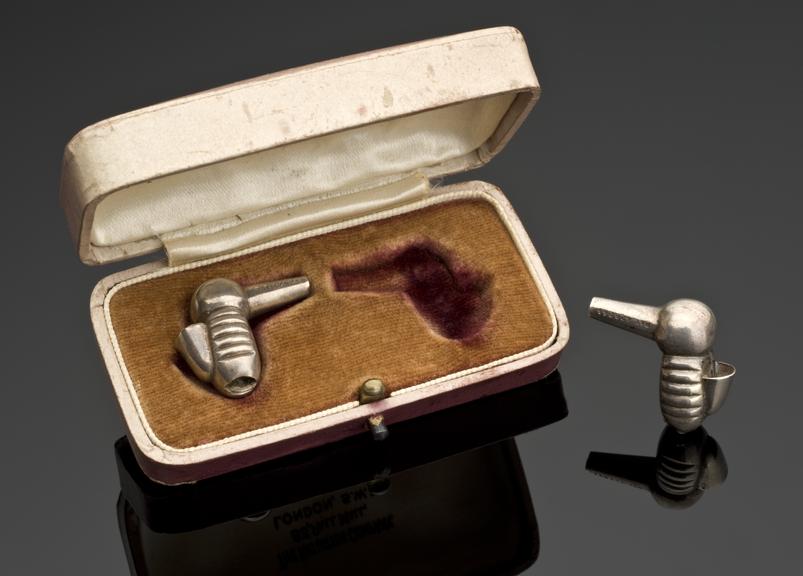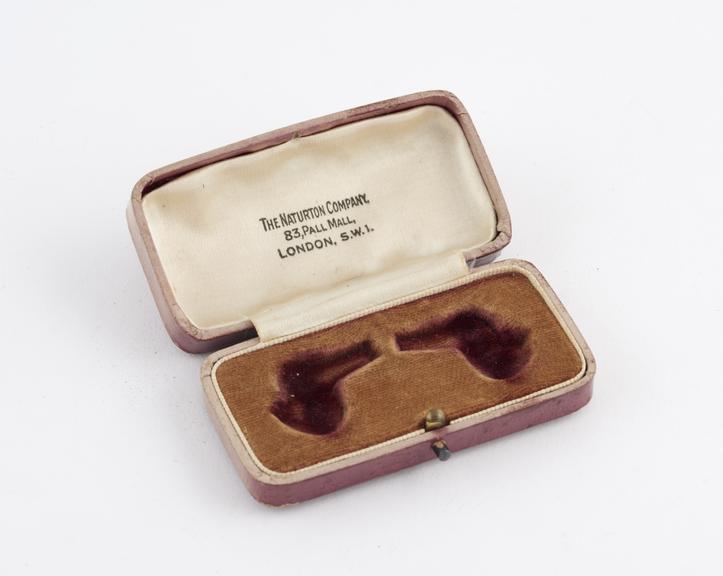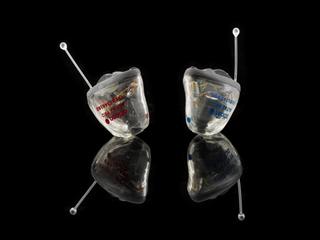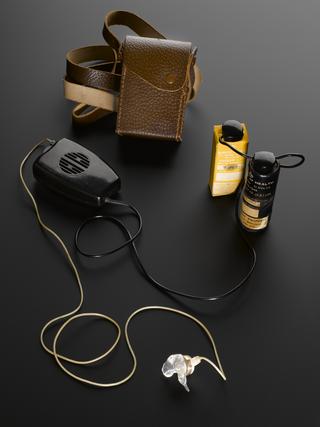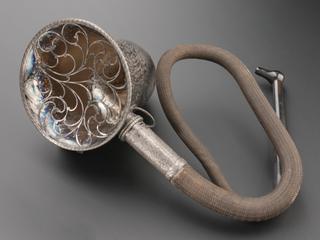
Mechanical hearing aid
Silver Brune-Sedeyn mechanical hearing aid, by the Naturton Company, London, 1935-1936
More
Shaped like a pair of tiny hummingbirds these silver hearing aids were worn perched inside the ear canal to improve the hearing for people who were partially deaf. Hearing aids amplify sound to the ear drum. This vibrates and passes the sound to the bones of the middle ear, which are called ossicles. These bones also vibrate and amplify the sound to pass it to the inner ear. The hairs of the bones in the inner ear send a nerve impulse to the brain. The brain translates this into noise. They were invented by D. F. Brune and V. A. Sedeyn of Belgium in 1933. They were patented in England in 1935.
- Materials:
- silver (alloy)
- Object Number:
- 1985-1812/1
- type:
- hearing aid
- Image ©
- The Board of Trustees of the Science Museum
